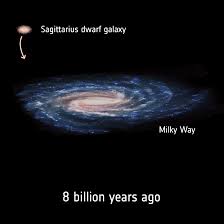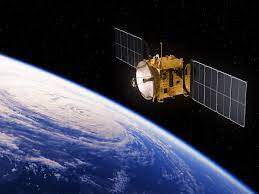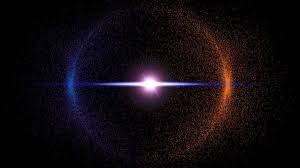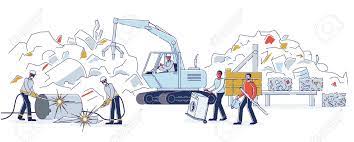Module 4
Lesson 1 :
SB page 37
Before reading:
1. Look at these pictures.
2. What can you see? Name them.
A.  B.
B.
C.  D.
D.
E. F.
F.
The answers: A. An astronaut B. Galaxy C. Milky way
D. A satellite E. Universe F. A spaceship
*****************************************
3. The key words:
****************************************************************************
4.While reading:
SB Page 37 /Excersice 3:
3 Listen to the words below in context. Try to guess their meanings
It takes the Earth 365 days to revolve around the Sun.
2. Venus is the name of the planet between the Earth and Mercury.
3. The Earth is one of the eight planets in our solar system.
4.Our solar system is just one of many in the galaxy.
5. There are millions of planets, stars and galaxies in the universe.
6. Mobile phones can send and receive calls because of satellites in space.
7. I am reading a book about how spaceships travel to space.
8. Our galaxy is called the Milky Way.
9. Neil Armstrong is my favourite astronaut because he was the fi rst man to walk on the Moon.
*********************************
*The main ideas:
1. Knowing the parts ofthe universe.
2. Distinguishing between who was the first man in space and who was the first man on the Moon.
3. The ability to name the planets individually.
4. Classefing each planet and know its characteristics.
Excersise 1:
1. What is the Milky Way?
a. a galaxy b. a planet c. a universe
*The answer is : a. a galaxy.
2. Our Sun is …
a. in the centre of the Milky Way. b. outside the Milky Way. c. in one of the arms of the Milky Way.
*The answer is : c. in one of the arms of the Milky Way.
3. How many planets are there in our solar system?
a. eight b. seven c. nine
*The answer is :a. eight
4. Which is the biggest?
a. Jupiter b. the Earth c. the Sun
*The answer is: c. the Sun
5. The Sun revolves within …
a. the Earth. b. the Milky Way. c. the Moon.
*The answer is: b. the Milky Way
****************************************
Excersise 4:
*Discuss when you think man will be able to travel to Mars and other planets. Would you like to be an astronaut? What will the fi rst men travelling to Mars, Jupiter or another planet see? Take down notes.
The answer: Before humans were sent into space, animals were sent to make sure it was safe. Flies were the fi rst living creatures sent into space, followed by mice, monkeys and dogs. Once scientists saw that animals were able to survive, they knew it would be safe for humans to travel into space. The fi rst man in space was a Soviet astronaut called Yuri Gagarin. He was only 27 years old when he fl ew there in 1961. In 1969, the US astronaut Neil Armstrong became the fi rst man to walk on the Moon. Until now, this is the furthest humans have travelled into space. Nowadays, private companies are thinking of ways for humans to visit space regularly. They know that the way to enable this is to make space travel cheaper, easier and faster.
****************************************************************
*After reading :
1.Who was the first man walked on the moon?
The answer is : Neil Armstrong.
2. How many planets does the solar system contain?
The answer: Eight planets.
3.What is our galaxy called?
The answer: The Milky Way.
4.Who is Yuri Gagarin?
The answer: He was the first man in space.
*******************************************
Lesson 2 and 3 / There will be a problem
Look at this picture. What does it show?

The answer : Scrapyard
2. The key words:
|
The word/ phrase |
The meaning |
The part of speech |
|
To float |
Rest or move on or near the surface of a liquid without sinking. |
Verb |
|
To full apart |
To break down |
Verb |
|
Space shuttle |
A rocket- launched spacecraft, able to land like an unpowered aircraft, used to make repeated journeys between the earth and earth orbit. |
Noun |
|
Scrap |
A small piece or amount of something, especially one that is left over after the greater part has been used |
Noun |
|
Orbital debris |
Is junk that is circling Earth. It is pieces from spacecraft. |
Noun |
|
screwdriver |
A tool with flattened, cross-shaped, or star-shaped tip that fits into the head of a screw to turn it. |
Noun |
3. Read the following text.
| Do you think that scrap or rubbish is a problem on Earth? Well, it’s also a problem in the sky. On a clear night, look up into the sky. What will you see? You will see the Moon, the stars and the satellites. Although you won’t see it, you will also be looking at the largest scrapyard in the solar system. Look at this picture. There are tens of millions of pieces of rubbish. Scientists call this “orbital debris”. You will fi nd the most unusual things floating around the Earth: a camera, a screwdriver, and even a glove! Most of this rubbish comes from satellites and rockets that stopped working and fell apart. This orbital debris would weigh fi ve million kilogrammes on Earth. This scrapyard could cause serious problems. In August 2008, when a space shuttle returned to Earth, it had small but dangerous holes in it made by pieces of space debris. So, let’s start thinking of ways to tidy space up! |
Exercise 2:
2 Read the article again and answer these questions.
a. “This scrapyard could cause serious problems.” Is this a fact or the writer’s opinion? Explain why.
b. In your opinion, what could the solutions to orbital debris be?
c. Do you think it is possible that other planets have space debris
The answer:
a. The statement is a fact because space debris has already caused problems. In 2008, a space shuttle was damaged when returning to Earth.
b. Students’ own answers
c. Students’ own answers
****************************************

This picture shows you the part of the universe .
****************************************
First section 1 /Ab page : 30
Label the pictures using the vocabulary from Module 4.
a. s__________ b. a__________ c. s________ s _______________
d. to r_______ e. s________
The answer :
a. spaceship b. astronaut c. solar system d. to revolve e. satellite